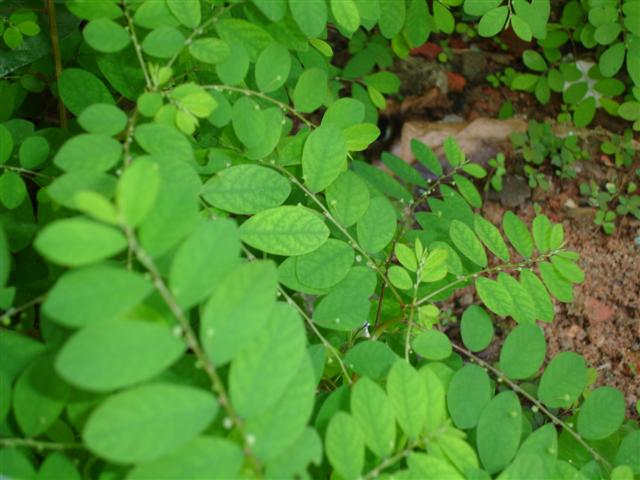Chanca Piedra - Phyllanthus niruri

Common Names: Chanca Piedra, Stone Breaker, Stonebreaker, Shatter Stone, Quebra Pedra, Quebrapedra, Casse-Pierre, Arranca-Pedras, Chance Pierre, Pierre de Chanca, Bhumyamalaki, Bhumy-Amla, Bhoomi Amalaki, Amli, Punarnava, Cane Senna, Tamalaka, Bhonya, Phyllanthus niruri (Latin, scientific, international)
Latin Name: Phyllanthus niruri
Origin: Asia, South America, North America
Short Introduction
Chanca Piedra grows wild in tropical regions (South America, India, and other areas highlighted under "Origin and Distribution") and commercial cultivation in temperate zones is nearly impossible (there are no records of farmers specializing in this crop).
Detailed Description
Trouble with kidney or gallstones? Chanca Piedra, also known as the "Stone Breaker," is renowned for its ability to aid in dissolving both kidney and gallstones.
Botanical Information
Chanca Piedra is an annual, upright, modest-looking herb that reaches up to 60 cm in height (typically 30–40 cm). Its stem is light green, bearing several horizontal branches each 5–10 cm long. The simple, entire, hairless leaves are pale underneath, elliptical, alternate, upright, and possess short petioles. The plant produces small, simple flowers in various shades of green, sometimes with red tinges, which grow in the leaf axils. The fruit is a smooth capsule 2–3 mm in diameter, each containing 2–3 angular seeds.
Origin and Distribution
Chanca Piedra is a discreet herb native to tropical regions worldwide. Its origin is in the Amazon rainforest along the Amazon River, where it thrives almost like a weed. The highest quality plants are said to grow above 3,000 metres. Chanca Piedra grows wild in China, India, Southeast Asia, South America, and the Bahamas, and has been cultivated in warmer areas of the USA (such as Florida, Texas). Native to the Amazon and other tropical areas, it is nearly impossible to grow successfully in temperate climates such as Central Europe.
Usage / Dosage
As its popular name "Stone Breaker" suggests, Chanca Piedra is traditionally used to support the treatment of urological issues. Its active compounds not only help dissolve kidney stones but also offer significant relief to those with frequent bladder and urinary tract infections (especially for women prone to vaginal infections).
Chanca Piedra relaxes the smooth muscles of the urogenital tract, assisting in the expulsion of kidney stones through natural processes. An additional benefit is its diuretic effect, aiding in the flushing out of existing stones. These properties have been recognized for centuries by traditional medicine, and modern evidence-based research continues to evaluate its use.
Its compounds act as mild analgesics and anti-inflammatory agents, supporting not only the elimination of stones but also providing relief from symptoms of kidney, bladder, and chronic urinary tract inflammation. Its analgesic and antispasmodic effects also make it helpful for menstrual pain.
A clinical study found that using a Chanca Piedra aerial part preparation as a tea for at least 3 months, accompanied by ultrasound therapy, effectively broke up lower urinary tract kidney stones. Its compounds can dissolve varying sizes of stones and also help prevent their formation by inhibiting uric acid synthesis—a mechanism also useful in conditions like gout and rheumatism—which is currently being further explored in clinical studies.
Some of Chanca Piedra's active substances also support digestion (especially of fats) and enhance the digestive tract’s ability to process nutrients. Additionally, these compounds help eliminate fat stored in the liver and contribute to lowering overall cholesterol. Chanca Piedra can aid in detoxification and liver support.
Its compounds have a protective effect on liver tissue, long observed by traditional medicine practitioners, who serve Chanca Piedra for healthy liver function, recovery, and in some cases, for infectious hepatitis. Its anti-inflammatory properties are traditionally harnessed both for serious liver and digestive illnesses and for everyday colds and viral infections.
One clinical study found that seven days of regular Chanca Piedra use reduced pain and other inflammatory symptoms in patients with sore throat and swollen lymph nodes (tonsillopharyngitis), supporting its historical use for the flu and common cold.
Due to its diuretic effect, Chanca Piedra can cause a slight reduction in blood pressure, which is generally mild but worth noting. Similar mild benefits may occur for blood sugar control, especially when combined with antidiabetic medications.
Traditional Medicine
Traditionally, Indigenous Americans used Chanca Piedra for urological complaints and gallstones. In traditional medicine, Phyllanthus is regarded as a diuretic, spasmolytic, and anti-inflammatory for the urogenital system. It is also used for inflammatory digestive situations and some sexually transmitted diseases.
Folk medicine often prescribes Chanca Piedra at regular intervals for cases of low urine output, colic, gallstones, bloating, poor appetite, indigestion, intestinal infections, and abdominal pain. Some indigenous communities use Chanca Piedra decoctions for constipation, flu, fever, malaria, gonorrhoea, syphilis, cough, itching, and pain.
Healers have long administered Chanca Piedra for liver spots, anemia, various types of infectious hepatitis as a liver tonic, and to cleanse the blood. South American folk medicine recalls its use for asthma-like symptoms, bronchitis, tuberculosis, and nausea.
Limitations and Precautions
Chanca Piedra’s diuretic effect can lower lithium levels, so a possible interaction should be considered if taking lithium. Extra caution is recommended for people on antidiabetic medications, or those with cardiovascular conditions—consult your doctor or pharmacist. Not recommended for pregnant women.
Active Compounds
Chanca Piedra contains a wealth of constituents, and since the 1960s, several research labs have worked to fully analyze its chemistry. Notable biologically active components include lignans (phyllanthin, nirurin, niruriside, hypophyllanthin, nirphyllin, lintetralin), terpenes (cymene, lupeol, limonene), flavonoids (rutin, astragalin, quercetin, quercitrin), lipids (linoleic acid, linolenic acid, ricinoleic acid), methyl salicylate, alkaloids (phyllantin, phyllochrysin, entnorsecurinin), beta-sitosterol, alkanes, vitamin C, tannins (ellagitannins, gallocatechins), saponins, brevifolin, and corilagin.
Traditional Dosage
Preparing Chanca Piedra tea is quick and simple. Use about 5–10 grams (or 1–2 tablespoons) of the aerial parts per litre of water, bring to a brief boil (about 5 minutes), then strain. Enjoy the tea three times a day. The tea has a honey-like color and a slightly bitter taste.


